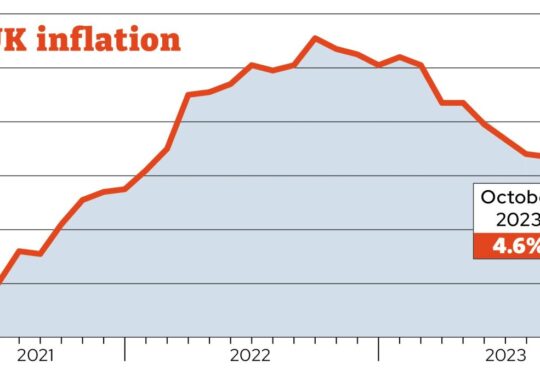
Finland was quick to respond to demographic ageing. What lessons can be learnt from its pension reforms?

Europeans are living longer and are staying healthy for longer. That of course is good but in combination with low birth rates threatens the financial sustainability of pension systems and the welfare state as a whole.
In the face of massive popular opposition, the French government recently pushed through a gradual increase in the retirement age, bypassing L’Assemblée nationale. The rationale was that there were fewer working-age taxpayers and contributors and increasing numbers of pensioners and elderly people in need of care.
Ratio critical
France is certainly not alone in facing this problem. In 18 out of 41 industrialised countries surveyed using the Bertelsmann Stiftung Sustainable Governance Indicators (SGI), the ratio between older people and the working population has become critical. Extending working lives has therefore become one of the central socio-political goals of recent years.
In almost all European countries, opportunities for early retirement have been abolished or at least severely restricted. The retirement age has also already been raised in most or is set to rise in the future. In ten European countries, retirement age is linked to life expectancy. The underpinning idea is that the ratio of expected average years spent in retirement to years spent in working life should remain roughly the same, to avoid placing an excessive burden on future generations in financing pensions.
Become part of our Community of Thought Leaders
Get fresh perspectives delivered straight to your inbox. Sign up for our newsletter to receive thought-provoking opinion articles and expert analysis on the most pressing political, economic and social issues of our time. Join our community of engaged readers and be a part of the conversation.
After Japan, Finland is the country which has been most, and most rapidly, affected by demographic ageing. Record low fertility (not even 1.4 children per woman in recent years) and low net immigration have reinforced the negative trend and threaten the sustainability of the welfare state. In Finland, however, policy-makers reacted relatively early and looked for solutions—and some results are already showing.
Extended working lives
The central goals of the last two Finnish pension reforms, in 2005 and 2017, were later retirement and extended working lives. Early and unemployment pensions, which had made it possible to retire before the standard retirement age until 2005, were gradually abolished.
In addition, a financial incentive was introduced, rewarding those who worked beyond the age of 63 with a higher pension accrual rate. This tended however to benefit higher earners and would have contributed, in the long run, to growing socio-economic disparities in pension levels.
Corrections were made in 2017. The flexible retirement age of 63 to 68, introduced in 2005, was replaced by a minimum and a target retirement age, linked to life expectancy and increased depending on the year of birth. Only when the target retirement age is reached is the full pension paid. Each month of early retirement, from the minimum pension age, reduces the pension by 0.4 per cent.
Those who have no earnings-related pension at all, or only a small one, receive a tax-financed so-called national pension on a pro rata basis. If the earnings-related pension exceeds €1,500 per month, there is no longer any entitlement to an additional national pension.
Model calculators offered by the pension system enable citizens to calculate their own retirement age and the retirement pension they can expect. This creates transparency as to the individual effects of the pension reforms and allows personal planning of retirement and income thereafter.
Successful policy
A successful policy is closely linked to a government’s ability to develop policies strategically and with the participation of all relevant groups, and to monitor them continuously after implementation.
Evaluations of the Finnish reforms show that more people are staying in work until retirement, especially workers with lower education. For ordinary workers, unemployment was often a path to early retirement before 2005. The abolition of the unemployment pension thus had an effect, actually narrowing socio-economic disparities in exit from the labour market. The increase in the retirement age in 2017 also had the hoped-for effect of making working lives longer overall.
Join the Movement for Progressive Ideas: Become a Social Europe Member!
Support independent publishing and progressive ideas by becoming a Social Europe member for less than 5 Euro per month. You can help us create more high-quality articles, podcasts and videos that challenge conventional thinking and foster a more informed and democratic society. Join us in our mission – your solidarity makes all the difference!
Despite the general increase in the retirement age, there are still many in industrialised countries who cannot—or do not wish to—work longer. As a result, there remain significant socio-economic differences in many states when it comes to retirement. Across Europe, workers with low education leave the labour market 2.8 years earlier on average than those who are highly qualified—the gap is smallest in Sweden, Germany and Finland. Research is still needed to identify the pension, education and labour-market policies which can best reduce these socio-economic inequalities in exit ages.
Essential building-blocks
Education and lifelong learning are essential building-blocks of stable labour-market participation. Prevention is becoming increasingly important, as more and more people are becoming temporarily or permanently disabled, already early in their working lives, due to mental or physical problems. Generous early education, childcare and care for elderly dependants are also important for gender equality in labour-market participation, as the Scandinavian welfare states demonstrate.
Flexible solutions in terms of working hours and organisation can make it easier for older workers to stay in the workforce longer. Employers’ appreciation of older workers also plays an important role. Fortunately, a survey of employers in Finland found little evidence of the age discrimination in employers’ attitudes often assumed in public debates. Whether this positive result is actually reflected in recruitment behaviour and efforts to retain older workers remains to be seen.
Pension policy must continue to keep in mind the diversity of individual life courses. Many people are still fit and willing to work at the age of 70, while others’ ability to do so diminishes far earlier.
The welfare state must ensure an adequate retirement income for all. The measures needed to deal with demographic ageing in a financially and socially sustainable way extend far beyond pension policy.
Translated from German by Jess Smee
Kati Kuitto is a senior researcher at the Finnish Centre for Pensions in Helsinki. She conducts cross-country research on pensions systems and policies and is a member of the Sustainable Governance Indicators expert network of the Bertelsmann Stiftung.







